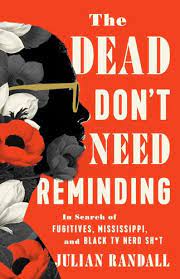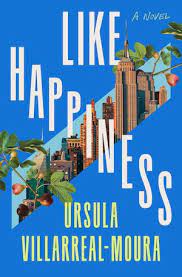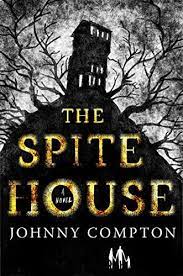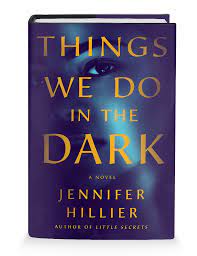
Book: Devil is Fine
Author: John Vercher
Publisher: Celadon Books
Year: 2024
Rating: 5 out of 5 stars
Synopsis : “From acclaimed novelist John Vercher, a poignant story of what it means to be a father, a son, a writer, and a biracial American fighting to reconcile the past.
Reeling from the sudden death of his teenage son, our narrator receives a letter from an attorney : he has just inherited a plot of land from his estranged grandfather. He travels to a beach town several hours south of his home with the intention of immediately selling the land. But upon inspection, what lies beneath the dirt is much more than he can process in the throes of grief. As a biracial Black man struggling with the many facets of his identity, he’s now the owner of a former plantation passed down by the men on his white mother’s side of the family.
Vercher deftly blurs the lines between real and imagined, past and present, tragedy and humor, and fathers and sons in this story of discovery – and a fight for reclamation – of a painful past. With the wit of Paul Beatty’s The Sellout and the nuance of Zadie Smith’s On Beauty, Devil is Fine is a darkly funny and brilliantly crafted dissection of the legacies we leave behind and those we inherit.”
Review : I had absolutely no idea what kind of wild ride I was getting myself into when I opened this book – full disclosure, the synopsis gives approximately 10% of the book away (okay, maybe I exaggerate…45%?). I started it a couple evenings ago and (spoilers), much like our protagonist, found myself losing time. I looked up two hours later, half the book read, and breathed out for the first time in who knows how long. Woah.
*Due to the little information provided by the synopsis, the majority of this review will contain spoilers, you have been warned.*
I absolutely demolished this book. I can’t even explain to you how quickly I devoured it. So much so that it wasn’t until this very moment I sat down to write this review that I realized we never get the narrator’s name. The novel begins with the narrator sitting in traffic on his way to his teenage son’s funeral, stopped somehow by construction, watching a construction worker do a dance while our narrator has a panic attack. A writer and tenure-track professor, our narrator is a biracial Black man working through what it means to exist in a post-2020 world where his audience and colleagues have largely appeared to have moved on from the protests and interests that were front and center just a few years ago. Finding the book he’s been working on tossed aside by one publishing house after the next, he finds his tenure tracked job suddenly on the rails. Unless he can get his new book picked up immediately, he risks losing his secure job. In the midst of the turmoil and trauma of not only losing his son but the prospect of losing his job, he receives a letter from his attorney : a large piece of property on the coast of Pennsylvania that was willed to his son has now passed to him. Our narrator decides to take a few extra days of bereavement leave to have a look, put the property on the market, and take a trip to a place he has hated since childhood – the beach.
It’s hard to fully explain the depth of surrealism that Vercher’s able to achieve in this work. Devil is Fine presents itself as a pretty realistic book grounded in a pretty realistic character, someone we might see teaching classes and publishing books, someone we might see on social media, someone we can relate to immediately as grounded in reality. It’s when our narrator makes his way to the sea, though, that the thread holding reality and dreams begin to unravel. On a cocktail of anti-anxiety medications, our narrator (who has been sober for 17 years) finds himself saying yes to a drink at the bar attached to his small rental at the beach. As it turns out, the property he’s inherited has not come with any kind of structure so he rents from a bartender / realtor / bike shop owner who serves as his off-the-wagon enabler, serving drink after drink after damned drink to a man who very clearly should not be served in the first place. There are so many moments of frustration and grief that swirl throughout this story, and this relationship between alcohol, medications, and those who egg him on while simultaneously providing a form of magical-comedic-grounding relief is one of them.
As our narrator dives deeper into the all too familiar taste of alcoholism, he begins to find himself plagued by sleep paralysis – or so it seems. Waking to find emails sent, book proposals drafted, and responses given in the middle of the night, what should ultimately be a fairly benign experience begins to take on supernatural undertones. When our narrator, in a fairly drunken haze, steps barefoot onto his beachfront property one night, he unexpectedly, and painfully steps on a dead jellyfish, stung even in it’s death. Now he’s not only battling alcohol and medication induced sleep demons, he’s also battling physical pain. The boundaries around the natural world begin to swim and blur and fracture, creating ghostly appearances, pulling mementos from his past into his present, and allowing him to have, what had until now been a one-sided conversation with his son, a two-sided conversation with the dead.
It is during this unraveling of reality that our narrator comes to find that the sprawling beachfront property he’s inherited is actually a former plantation, owned and passed down by the members of the white side of his family. Through this dream-like experiences, our narrator begins to confront the very real demons of his past, the generational curses that follow family members, and perhaps even emerge from beyond the grave, and the father-son relationships that not only created his relationship with his son but mirror his relationship with his own father. It’s through this reality bending that our narrator begins to find the space to heal the wounds that have lead to the at times fractured relationship he and his son shared. We begin to see reality for what it is, not something that exists in one time and place, but something that bends and moves, shaping and folding itself over generations, creating and dissolving into each family member until they’re ready and capable of finding the healing necessary to move forward.
Advice : I cannot recommend this book highly enough. This is hands down one of my top books of the year. It’s expertly crafted, full of intricate detail, and that ending! My god! The ending! I won’t spoil it for you, but trust me when I say this is a must read.








